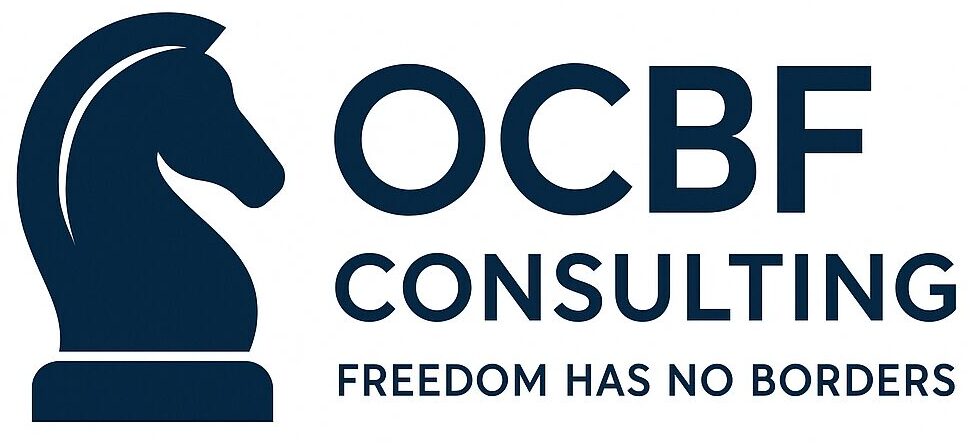Imagine this: you’re setting up a corporate bank account for your offshore company, excited to finally get things rolling. Suddenly, the bank asks for something called a “Certificate of Incumbency,” and you’re left scratching your head. What is this mysterious document, why do you need it, and how do you get one? Don’t worry—you’re not alone. Many business owners, especially those managing offshore companies, find themselves in the same situation. The good news? how to Get a certificate of incumbency is simpler than it sounds.

In this article, we’ll break down everything you need to know about obtaining a certificate of incumbency: what it is, why it’s important, and how to get it quickly and easily. By the end, you’ll feel confident about handling this common but often misunderstood document.
What Is a Certificate of Incumbency?
A certificate of incumbency is a legal document issued by a company that lists the current officers, directors, shareholders, or other key company officials. Essentially, it’s a document that confirms who is authorized to make decisions or sign documents on behalf of the company.
For example, if you own an offshore company and need to open a corporate bank account, the bank may request a certificate of incumbency to verify that the individuals handling the account are officially recognized by the company. Think of it as the company’s way of saying, “Yes, these people are who they say they are, and they’re authorized to act on behalf of the company.”
What Does It Include? Typically, a certificate of incumbency will contain:
- The company’s name and registration number
- The names and titles of the current officers and directors
- A list of authorized signatories (those who can sign official documents)
- Sometimes, it includes shareholders or beneficial owners
Why Do You Need a Certificate of Incumbency?
You might be wondering, why is this document so important? In most cases, it’s required for banking and legal purposes. Banks, for instance, won’t open an account for your company until they verify who is in charge. But it’s not just banks that ask for this; lawyers, government agencies, and even potential business partners might request a certificate of incumbency to ensure the right people are at the helm.
Imagine this scenario: I recently helped a client who wanted to expand his offshore business in the British Virgin Islands (BVI). Everything was going smoothly until he tried to register a property under the company’s name. The legal team handling the sale required a certificate of incumbency to confirm that he was, in fact, a director authorized to sign on behalf of the company. Without the certificate, the entire transaction could’ve fallen apart. This document might seem like a small detail, but in business, it holds significant weight.
When Will You Need One?

Common situations where you may be asked for a certificate of incumbency include:
- Opening or maintaining a corporate bank account
- Signing legal contracts
- Participating in business transactions, like mergers or acquisitions
- Registering assets or properties under the company’s name
- Providing proof during tax or compliance audits
Step-by-Step Guide: How to Get a Certificate of Incumbency
Now that you know what a certificate of incumbency is and why it’s important, let’s dive into how to actually get one. While it may sound complicated, the process is usually straightforward—especially if you work with a registered agent or corporate secretary.
Step 1: Determine If Your Company Issues Certificates of Incumbency
The first thing you’ll want to do is check your company’s bylaws or governing documents. Many companies, particularly offshore ones, already have a process in place for issuing certificates of incumbency. If your company is incorporated in a jurisdiction like the Cayman Islands, the British Virgin Islands, or Seychelles, you’re likely familiar with this document already.
Step 2: Contact Your Registered Agent or Corporate Secretary
For offshore companies, it’s common to have a registered agent or corporate secretary handle the administrative side of things. Reach out to your registered agent and request the certificate. In most cases, they’ll already have a template or process in place for issuing it.
When I was helping a client set up his company in Panama, we reached out to the registered agent, provided updated information about the current directors and officers, and they took care of the rest. Within a week, we had the certificate of incumbency in hand—ready for any legal or financial situation that came up.
Step 3: Provide Necessary Information
To issue the certificate, the registered agent will need certain details about your company. Make sure your company’s records are up to date. You’ll likely need to provide the current list of officers, directors, and any other important figures within the company. If there have been any recent changes in leadership, now’s the time to update your records with the agent.
Step 4: Pay the Required Fee
There’s typically a small fee associated with obtaining a certificate of incumbency, especially in offshore jurisdictions. The cost can range anywhere from $50 to $200, depending on the country where your company is incorporated and the complexity of your request. For example, when I assisted a client with an offshore company in Seychelles, the fee was about $100.
Step 5: Wait for Processing
Once you’ve submitted your request and payment, your registered agent or corporate secretary will process the certificate. The time frame varies depending on the jurisdiction, but in general, you can expect the document to be issued within a few days to a week. Expedited services are usually available for an additional fee.
Step 6: Verify the Document
Once you receive the certificate, take a moment to review it. Double-check the names, titles, and dates to ensure everything is accurate. If there’s a mistake, it could delay your banking or legal processes. One client of mine almost missed a key deadline for signing a contract because a director’s name was misspelled on the certificate—fortunately, we caught the mistake in time!
Step 7: Use the Certificate
Now that you have your certificate of incumbency, you’re ready to present it to banks, lawyers, or other entities requesting proof of your company’s leadership. Keep a digital copy on hand as well for future use—it’s likely you’ll need it again at some point.
Common Mistakes to Avoid
While the process of obtaining a certificate of incumbency is straightforward, there are a few common pitfalls to avoid:
- Failing to update company records: Your certificate of incumbency is only as accurate as the information your registered agent has on file. If your company recently changed directors or officers, make sure your agent is aware of these updates before requesting the certificate.
- Using an unreliable registered agent: If your registered agent isn’t reliable, you may experience delays or errors in getting the document. Choose a reputable agent who understands the legal requirements of your company’s jurisdiction.
- Not verifying the document: Always review the certificate carefully once you receive it. A small mistake can create significant headaches later, especially if banks or legal teams refuse to accept an incorrect document.
Final Thoughts
Obtaining a certificate of incumbency might seem like a minor task, but it’s an essential one. This document serves as proof that the people handling your company’s affairs are authorized to do so, and it’s often required in banking and legal matters. Fortunately, the process is relatively simple, especially if you work with a knowledgeable registered agent or corporate secretary.
As someone who’s helped multiple clients navigate offshore business administration, I can confidently say that getting a certificate of incumbency is a straightforward but crucial step in managing your company’s operations. Take the time to ensure your company records are accurate, work with a reputable agent, and keep your certificate up to date—it will save you time and stress in the long run.










